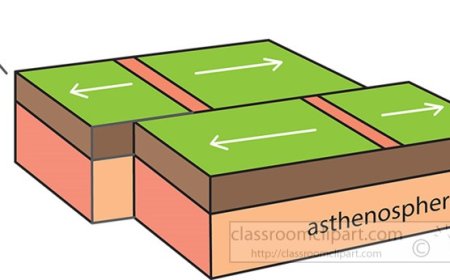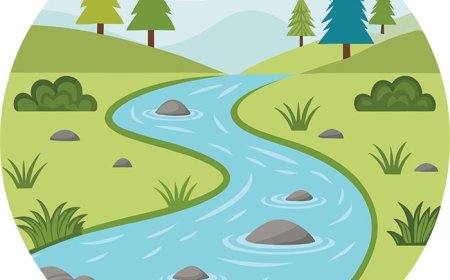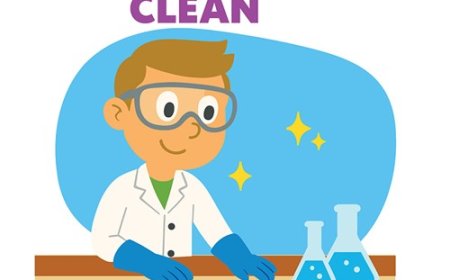Properties of Matter for Students with Examples
Learn the physical and chemical properties of matter including density mass volume and conductivity with examples for science students
🌟 Introduction
Everything you touch breathe and see is made of matter and every kind of matter behaves in its own special way. A metal spoon feels cool and conducts heat while a wooden spoon feels warm and does not. Oil floats on water but a rock sinks. Rubber bends without breaking yet glass can shatter. These differences are not random-they come from properties of matter, the traits that describe how a substance looks feels and acts.Understanding properties helps us choose the right materials for the job. Chefs pick pans that spread heat well. Engineers choose sturdy lightweight alloys for bridges and airplanes. Doctors rely on materials that do not react with the body. Even at home you use properties when you grab an oven mitt to block heat or pour juice into a container that will not leak. In science class properties let us identify unknown substances predict how they will behave and explain why everyday things work the way they do.
🔍 What are Properties of Matter?
Properties of matter are the characteristics that describe a substance and help us tell it apart from others. Physical properties can be observed or measured without changing what the substance is. Color mass volume density hardness magnetism melting point boiling point solubility and electrical or thermal conductivity are common examples. A copper wire conducts electricity a block of ice melts at 0°C and a pine board floats because its density is less than water. Chemical properties describe how a substance can change into something new. Flammability reactivity with acid ability to rust or tarnish and how a substance decomposes are examples. Iron can rust when it reacts with oxygen milk can sour and baking batter can transform into cake. These properties become visible when a chemical reaction occurs.
🌍 Why are Properties of Matter Important?
Properties connect science to real life. Designers choose materials based on strength density and conductivity to build safe bikes phones and houses. Environmental scientists study solubility and reactivity to clean up spills. Doctors and dentists select materials for implants that are nonreactive and durable. In labs properties help us identify unknown samples compare results across experiments and build explanations that others can repeat and trust. For students learning properties builds habits of measuring carefully thinking logically and explaining with evidence-skills useful far beyond science class.
🧪 Everyday Examples
If you drop a steel marble and a wooden bead into water the steel sinks and the wood floats. That observation points to density-steel has more mass packed into the same space than water while wood has less.When you stir salt into soup it disappears but sand does not. That difference involves solubility-salt's particles separate and mix evenly with water but sand's do not.Touch the handle of a metal spoon left in hot cocoa and it warms your hand; a plastic spoon does not. That is thermal conductivity in action-metals pass heat quickly while plastics slow it down.Leave a shiny iron nail outside and it can turn reddish brown over time. The change is chemical reactivity with oxygen forming rust a new substance with new properties.Snap a glow stick and it lights up. Inside a safe chemical reaction releases energy as light, showing a chemical property that appears only when substances react.
✨ Fun Facts
-
Gold is so dense that a sugar‑cube sized piece weighs roughly as much as a large lemon.
-
Mercury is the only metal that is a liquid at room temperature.
-
A diamond and a pencil's graphite are both pure carbon; different atomic arrangements give totally different properties.
-
Aerogels can be so low in density they're nicknamed "frozen smoke."
📌 Key Takeaways
-
Properties of matter are traits that describe substances and predict behavior.
-
Physical properties do not change what a substance is; chemical properties describe how it can change into something new.
-
Density conductivity solubility and reactivity explain many everyday observations.
-
Scientists and engineers use properties to identify materials and choose the right one for each job.
🐾 Kid-Friendly Summary
Every substance has a personality called its properties. Some things are heavy for their size some bend some melt easily some burn and some do not. These traits help us tell materials apart and decide how to use them. When you choose a plastic cup instead of a metal cup for the microwave or grab an oven mitt to stop heat you are using properties of matter to make a smart choice.
📚 Vocabulary Words
-
Property - A trait that describes how a substance looks or behaves
-
Physical Property - Something you can observe or measure without making a new substance
-
Chemical Property - A trait that tells how a substance can change into something new
-
Mass - How much matter is in an object
-
Volume - How much space an object or liquid takes up
-
Density - Mass divided by volume showing how tightly matter is packed
-
Conductivity - How well heat or electricity moves through a material
-
Solubility - How well a substance dissolves in a liquid
-
Reactivity - How easily a substance takes part in a chemical change
🧠 Interactive Quiz
Choose the best answer for each question.
-
Which is a physical property?
- A. Flammability
- B. Density
- C. Reactivity
- D. Ability to rust
-
Which describes a chemical property?
- A. Color
- B. Shape
- C. Reactivity with water
- D. Mass
-
What is density?
- A. Amount of space an object takes up
- B. Ability to burn
- C. How much mass is in a certain volume
- D. Temperature when something melts
-
Which is a chemical property of iron?
- A. Color
- B. Ability to rust
- C. Mass
- D. Volume
-
Which is NOT a physical property?
- A. Shape
- B. Conductivity
- C. Boiling point
- D. Flammability


















































